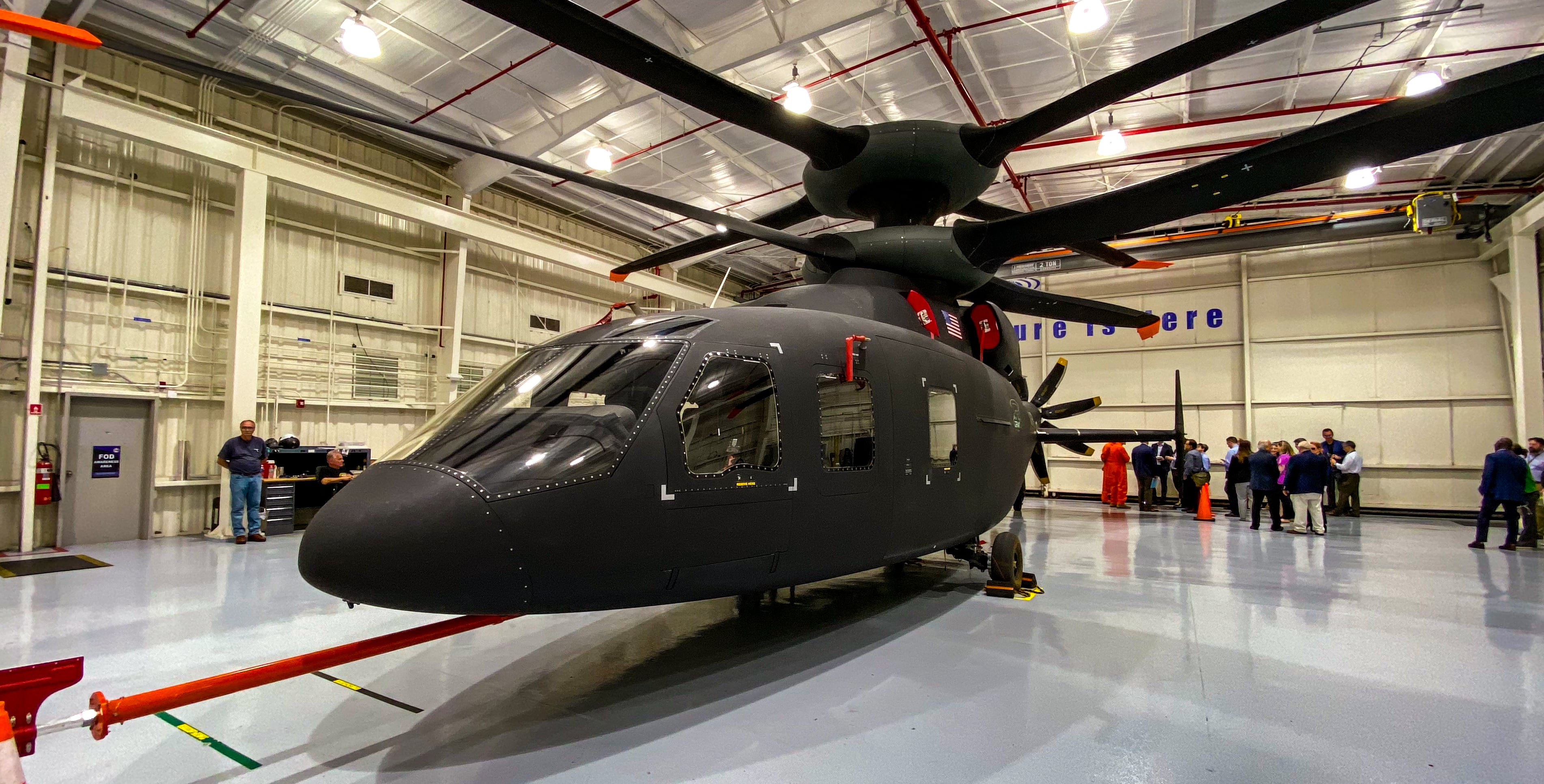WASHINGTON — Lockheed Martin’s Sikorsky said Tuesday it won’t sue the U.S. Army after the Government Accountability Office rejected its protest of the service’s decision to choose Textron’s Bell to build the Future Long Range Assault Aircraft.
The FLRAA competition pitted Bell’s V-280 Valor tiltrotor aircraft against Sikorsky and Boeing’s Defiant X, which features coaxial rotor blades.
Sikorsky “has decided not to pursue additional legal action regarding the [FLRAA] program,” a company statement said. “We are disappointed with the [GAO] decision and remain convinced that our [Defiant] X offering represented both the best value for the taxpayer and the transformation technology that our warfighters need to execute their complex missions.”
Instead, Sikorsky will turn its focus to the Army’s other future vertical lift pursuit, the Future Attack Reconnaissance Aircraft. Sikorsky is pitted against Bell in the FARA competition. Each company was selected in 2020 to build prototypes in a competition that will culminate in a flight demonstration phase that has now been delayed by several years beyond original plans to fly in 2023.
Flights of the prototypes are now scheduled to begin in the fourth quarter of fiscal 2024, wrapping up a year later, according to fiscal 2024 Army budget documents. The delays are due to issues the Army is having with its Improved Turbine Engine Program, the engine chosen for FARA.
The company will also continue its modernization of the Army’s UH-60 Black Hawk utility helicopters that will remain in service for decades as well as “future technology critical to mission readiness for the United States and Allied nations,” the Sikorsky statement added.
Sikorsky filed a protest late last year, but the GAO denied it on April 6.
“In denying the protest, GAO concluded that the Army reasonably evaluated Sikorsky’s proposal as technically unacceptable because Sikorsky failed to provide the level of architectural detail required by the [request for proposal],” an April 6 statement from the office read. “GAO also denied Sikorsky’s various allegations about the acceptability of Bell’s proposal, including the assertion that the agency’s evaluation violated the terms of the solicitation or applicable procurement law or regulation.”
The GAO determined that Sikorsky’s proposal was “technically unacceptable” for an award due to a failure to fully substantiate subsystem design in the digital architecture.
The 38-page protest decision also revealed that Sikorsky’s bid price of $4.445 billion came in at about half of Bell’s $8.087 billion bid price.
Lockheed Martin CFO Jay Malave said during an April 18 earnings call that the company believes it offered the best technology to support the requirements for FLRAA at the best value.
“The technology that we can provide as you would expect … we have the leverage, we have the capability, the wherewithal to provide favorable pricing and outstanding technology offerings to our customer, and we don’t do it at the expense of financial returns,” Malave said, adding that a significant amount of its offerings included efficiencies made possible through its model-based and digital thread enhancements that “significantly improved our cost competitiveness.”
The deal for the next-generation helicopter is worth up to $1.3 billion and is set to replace about 2,000 Black Hawk utility helicopters. FLRAA won’t serve as a 1-to-1 replacement for existing aircraft, but it will take over the roles of the Black Hawk — long the workhorse of the Army for getting troops to and around the battlefield — in the 2030 time frame.
The engineering and manufacturing development stage, as well as the low-rate production phase, could be worth roughly $7 billion in total.
If the Army purchases the full complement of aircraft across the entire life of the fleet, the program could be worth about $70 billion, including potential foreign military sales, the program executive officer for aviation, Maj. Gen. Rob Barrie, said during a Dec. 5 media roundtable following the Army’s selection of Bell.
Jen Judson is an award-winning journalist covering land warfare for Defense News. She has also worked for Politico and Inside Defense. She holds a Master of Science degree in journalism from Boston University and a Bachelor of Arts degree from Kenyon College.





